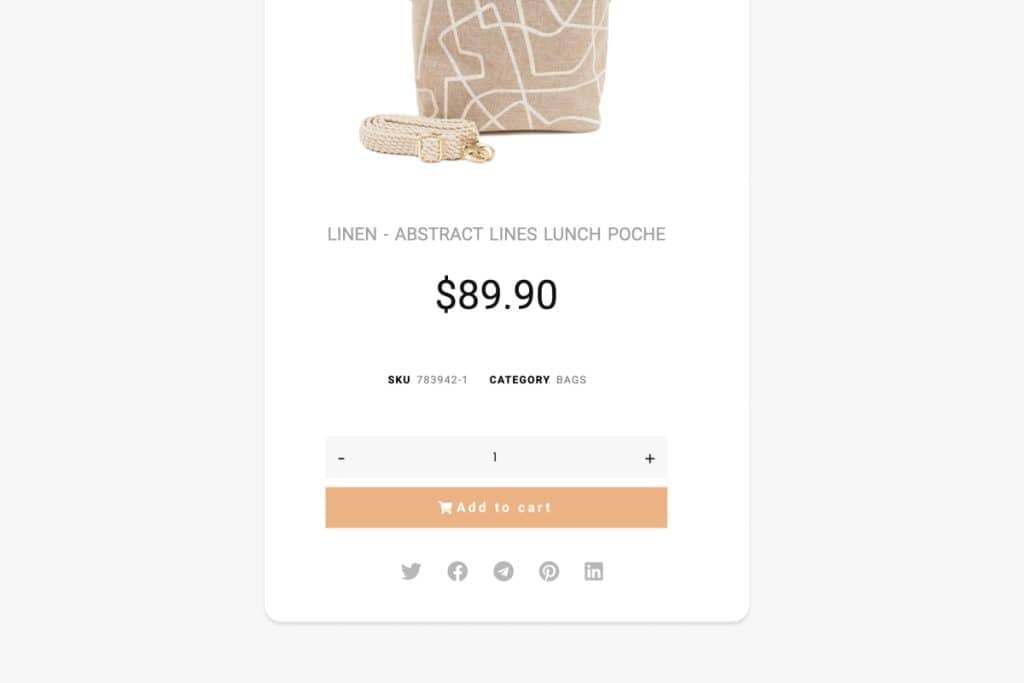In the current digital arena, making your WooCommerce shop mobile-friendly is no longer a choice—it’s imperative. The rise of mobile commerce has transformed the shopping landscape, leading to a surge in mobile purchases. Impressively, 79% of smartphone owners have shopped online via their devices, with almost three-quarters of e-commerce sales now conducted on mobile. Moreover, WooCommerce’s popularity is soaring, with 330+ new sites launching daily. This underscores the critical need for mobile optimization in today’s e-commerce environment.
Understanding the Mobile Commerce Boom
Mobile commerce has significantly altered the landscape of online shopping, with mobile devices now accounting for 42.9% of the ecommerce market as of 2024. This surge in mobile shopping has made it critical for WooCommerce store owners to ensure their sites are fully optimized for mobile users, providing a seamless and efficient shopping experience.
The Importance of Mobile Optimization
Optimizing WooCommerce for mobile is paramount for several reasons:
Enhanced User Experience Mobile shoppers expect fast, easy-to-navigate websites. A mobile-optimized site meets these expectations, reducing bounce rates and improving overall customer satisfaction.
Increased Conversion Rates: A streamlined mobile shopping experience can significantly boost conversion rates. Features like one-click checkout and mobile-friendly payment options encourage on-the-go purchases.
Improved Search Engine Rankings: Google prioritizes mobile-friendly websites in its search results. Optimizing your site for mobile can help improve your search engine ranking, making it easier for potential customers to find your store.
Key Strategies to Optimize WooCommerce for Mobile
Responsive Design
Priority: Ensure your site’s design automatically adjusts to fit any device size, from desktops to smartphones. Selecting a responsive WooCommerce theme is crucial.
Implementation Tips: Test your site’s responsiveness using tools like Google’s Mobile-Friendly Test. Pay special attention to the usability of menus, images, and forms on different devices. With tools like SellKit’s Checkout Builder, you can further enhance user experience by customizing responsive checkout pages, ensuring a seamless shopping process across all devices.
Speed Optimization
Critical Elements: Page load time is a key factor in keeping mobile users engaged. Fast-loading pages reduce bounce rates and encourage more interactions.
Optimization Techniques: Utilise compression tools to reduce image file sizes without losing quality. Implement caching solutions and consider using a content delivery network (CDN) to speed up content delivery globally.

Simplified Navigation
User Experience Focus: A mobile-friendly site must have intuitive and easy-to-use navigation. Complex menus can be frustrating on small screens.
Design Recommendations: Opt for a hamburger menu for mobile sites. Ensure that your call-to-action (CTA) buttons are large enough to be easily tapped with a finger.
Mobile Payments
Seamless Checkout: The easier it is for customers to complete their purchase on mobile, the higher your conversion rates will be.
Payment Integration: Support popular mobile payment methods such as Apple Pay, Google Pay, and PayPal. The one-click payment option can significantly enhance the mobile shopping experience. Integrating Sellkit’s Fast Checkout feature can streamline this process further, allowing for an even smoother transition from selection to payment, boosting the overall mobile user satisfaction and conversion rates.
Social Media Integration
Engagement and Traffic: Leverage social media to create a seamless path from social discovery to purchase.
Implementation: Use social sharing buttons and integrate your WooCommerce store with social media platforms to facilitate easy product sharing and purchases directly from social media feeds.

Touch-Friendly Interfaces
Design for Touch: Design elements should be easily navigable with a finger, avoiding the need for precise cursor movements.
Practical Tips: Ensure all interactive elements like buttons, links, and form fields are adequately sized and spaced to prevent user errors.

Optimized Media Content
Balancing Quality and Speed: High-quality images and videos are essential for showcasing products but can slow down your site.
Solutions: Use responsive images that adjust in size based on the device and consider lazy loading for images and videos to improve page load times.
Customer Support Accessibility
Immediate Assistance: Mobile shoppers appreciate quick and easy access to support.
Strategies: Incorporate live chat features and ensure your contact information is easy to find and use on mobile devices.
Push Notifications
Push notifications can significantly boost engagement by keeping your customers updated with personalized offers, new product arrivals, and reminders. They provide a direct communication channel to encourage repeat visits and purchases.
Voice Search
With the rise of voice assistants, optimizing for voice search by incorporating natural language phrases and question-based queries can improve your store’s visibility and accessibility, catering to users who prefer voice commands over typing.

AR (Augmented Reality)
AR features can transform the shopping experience by allowing users to visualize products in their own space or on themselves. This immersive interaction can increase confidence in purchase decisions, reduce returns, and enhance user satisfaction.
Dark Mode
Implementing dark mode can improve readability and reduce eye strain for users in low-light environments. It also offers a modern look that can differentiate your store and cater to user preferences, potentially increasing time spent on site.
Mobile SEO
Visibility in Search: Optimizing for mobile search engines is key to attracting organic traffic.
Key Actions: Use mobile SEO practices such as optimizing titles and meta descriptions for mobile and ensuring your site’s content is easily crawlable and indexable by search engines.
Regular Testing and Feedback
Continuous Improvement: Mobile user expectations and devices evolve rapidly.
Approach: Regularly test your mobile site on various devices and solicit feedback from users to identify areas for improvement.
Leveraging WooCommerce’s Growing Ecosystem
With WooCommerce powering over 60% of eCommerce sites and processing over $100 billion in merchant transactions yearly, the platform’s robustness and flexibility make it ideal for creating a highly optimized mobile shopping experience. The platform offers an extensive range of mobile-friendly themes and plugins designed to enhance functionality and improve mobile user engagement.
Conclusion
As mobile commerce continues to grow, optimizing WooCommerce for mobile users is essential for staying competitive in the eCommerce space. Implementing the strategies outlined above can help you create a mobile-friendly shopping experience that meets the needs of today’s mobile shoppers, driving sales and fostering customer loyalty in the process. With WooCommerce’s extensive ecosystem and the increasing importance of mobile commerce, now is the time to ensure your store is fully optimized for mobile users.

